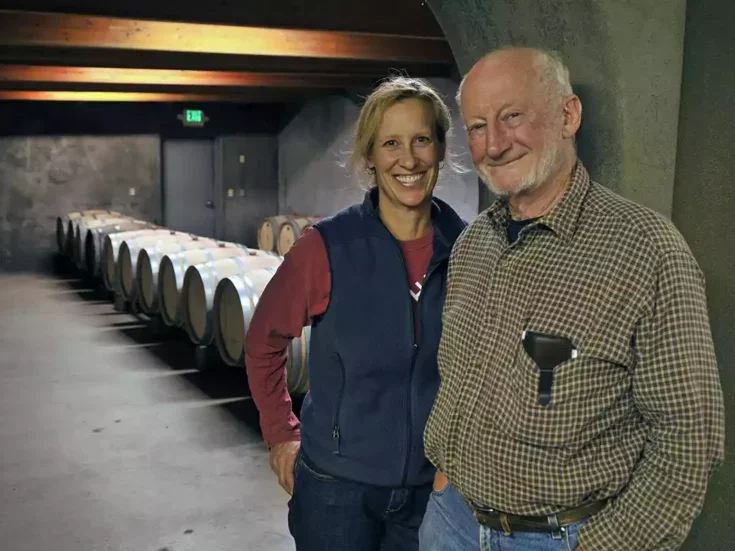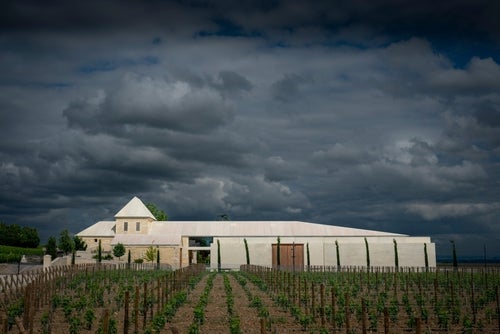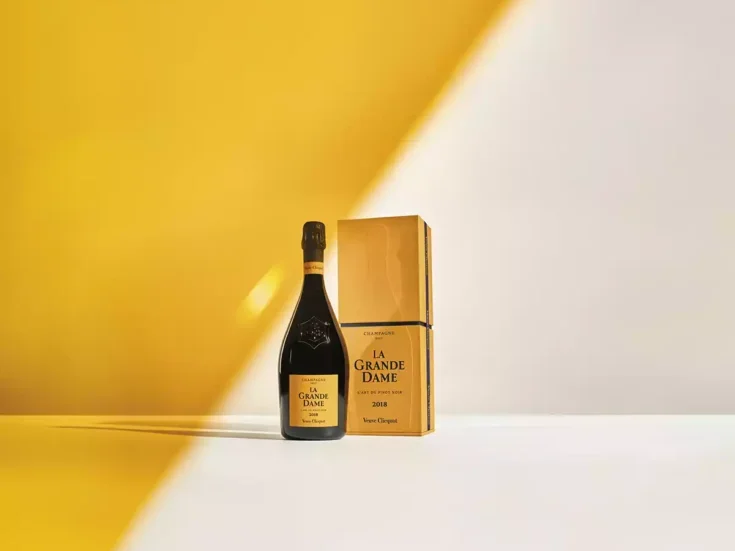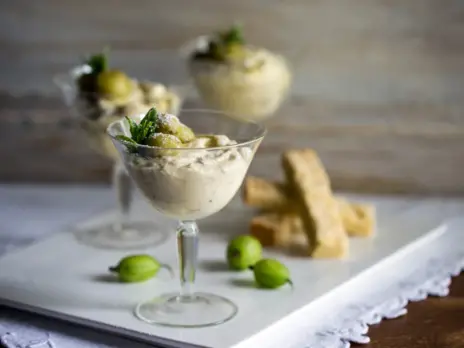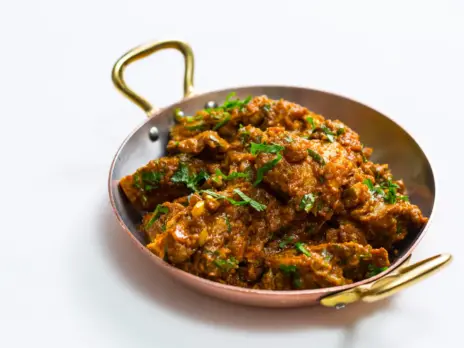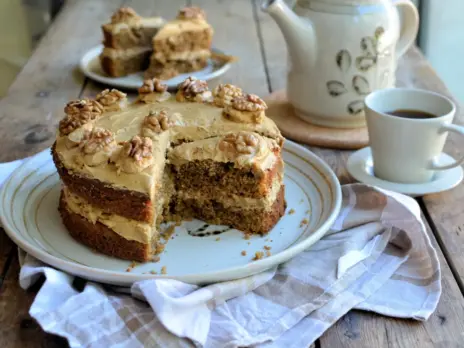
At last, samples from Kruger-Rumpf!
“At last,” because I haven’t been able to taste these properly (at home) since I started these tastings in 2021. I did speed-taste twice at the estate, but of course it’s not the same. The last time, in October 2024, I was able to select my favorites, and holy of holies, they were sent to me. If you wonder at the consistent plaudits I’m giving the wines, these were the best and/or the wines I most wished to taste again, properly.
I first shipped the wines in—gulp—1989, having ventured to the lower Nahe in search of its great (and unknown) terroirs. Kruger-Rumpf was certainly the leading grower in those parts, and Stephan Rumpf was an agreeable fellow to work with, by which I mean he’d let me taste everything and cherry-pick my favorites. Eventually we’d work together on some of the blends, and things hummed along for the (then) 11ha (27 acres) estate.
As the generations proceeded the winery grew, as often transpires. Generations transitioned. Georg Rumpf was ambitious, enterprising and dynamic, and Rumpf became a “rising star” as these things are identified. Each year there were more and more wines to consider, and tasting became something of a decathlon. I could still find plenty of wine for my offerings, and I noted a steady upward climb in overall quality—but it took selectivity. It was work.
The wines I scooped out of the total production were not just a measure of my adorable connoisseurship but also a practical necessity. As the estate grew (now 40ha [100 acres]) the number of individual wines became unwieldy. I was pleased to see the gathering reputation the winery was earning, yet I also tended, somewhat reluctantly, to demur. Georg Rumpf was finding me incomprehensibly hard to please.That made me wistful, because I admired and liked him and the wines were constantly improving—yet something made me, reluctantly, veer from the consensus.
I no longer do; the wines are (as they say) All That, and I think it has to do with a new and larger physical winery whereby the cellarmaster(s) have many fewer technical and logistical constraints. It shows in the wines, and remarkably it shows in the wines in what I think is a difficult vintage (2023) where I again question much of the received wisdom.
I’ll try to explain. I lay great emphasis on texture and clarity and relish a degree of digital crispness, and multi-pixelated high-def precision that other tasters might find “sterile.” I think it signifies class, and even before I consider a flavor (or flavors) I’m responding to a wine’s basic expressiveness and articulation. Until the last (maybe) five years my sense of Rumpf was that many of the wines were exciting and often richly satisfying, but a final scintilla of definition and class was missing.
If it sounds imponderable, it probably is. I can’t supply a recipe for it, and it’s feeble to say “you know it when you taste it,” but alas, you do.
But each time I visited, the wines drew closer to my (subjective) ideal, and when I was there nine months ago I felt they had arrived. To be sure, there are peaks and valleys—how could it be otherwise in an estate that size? But the best wines were both greater in number and truly elite in quality.
I freely confess I culled my favorites to taste again. Other than the two Spätburgunders, I had tasted them all before. I’ve had a whole bunch of fun the last 4-5 days, considering these lovely beings with the time and attention they deserve.
2022 Kruger-Rumpf Spätburgunder Trocken
Surprise! These two Pinot Noirs are what they slid into the “empty slots” in the case. This is the “regular” one, with a pretty, limpid cherry color. I like Pinot Noir when it isn’t inky.
It smells a little like Künstler’s estate-PN. It’s in the soy-shiitake-sandalwood idiom. The palate is agreeably brisk (tasting temp is 61º) and surprisingly lingering. The Jancis glass reveals aromas of kirsch, and as always, focuses the palate.
There’s a lovely little country restaurant attached to the estate, and that’s where this wine belongs. It is entirely “good” and that is enough. You’re happy to have ordered it, assuming they serve it cool. You may find, as I am finding, that the wine unfolds in the glass and is maybe better than just “good.”
Admitting a subjectivity, I’m sometimes wary of a PN whose surface texture is too glossy. It often seems to preclude mid-palate depth, as it does here. This wine is definitely nuanced and interesting and tasty enough. I’m pleased with it and I hope they are too.
2019 Kruger-Rumpf Spätburgunder -R- +
The color is darker now, and the aromas have the affects attendant to the “reserve” designation but not too many and not too emphatic. It smells lovely, in fact, partly due to the ’19 vintage and partly due to a laudable restraint in the cellar.
I mean, this is a really delicious wine! It is also distinctive and arguably original. It seems to have the lucid focus and the delicate exotics of Nahe wine overall. It’s sleek and flowery, poised and articulate. If it were Riesling it would be Norheimer Kirschheck.
It has the virtues I’m loving about the 2021 PNs, the delicacy and diction and pure loveliness—but this is a 2019, where such virtues are rare. (’19 has other virtues, powerfully so, but not those ones.) It’s the kind of wine that makes me want to call my wine-pals and ask “Have you tasted Rumpf’s ’19 PN reserve? It’s super pretty and seriously interesting.”
A plausible cognate is Pernand-Vergelesses. I often use that cognate, because I love that commune’s red wines. You can obtain sleekness of outline and clarity of contour, along with purity and beauty of fruit, and at the level below the profound or ethereal—which we can’t afford anymore—you receive a fully enticing flavor I find incomparable. It’s also a sort of second cousin to a fruit-driven Corvina.
I find the dewy introverted beauty quite stirring. It’s Pinot-poetry, and it will be a small tragedy to reach the end of this wonderful bottle.
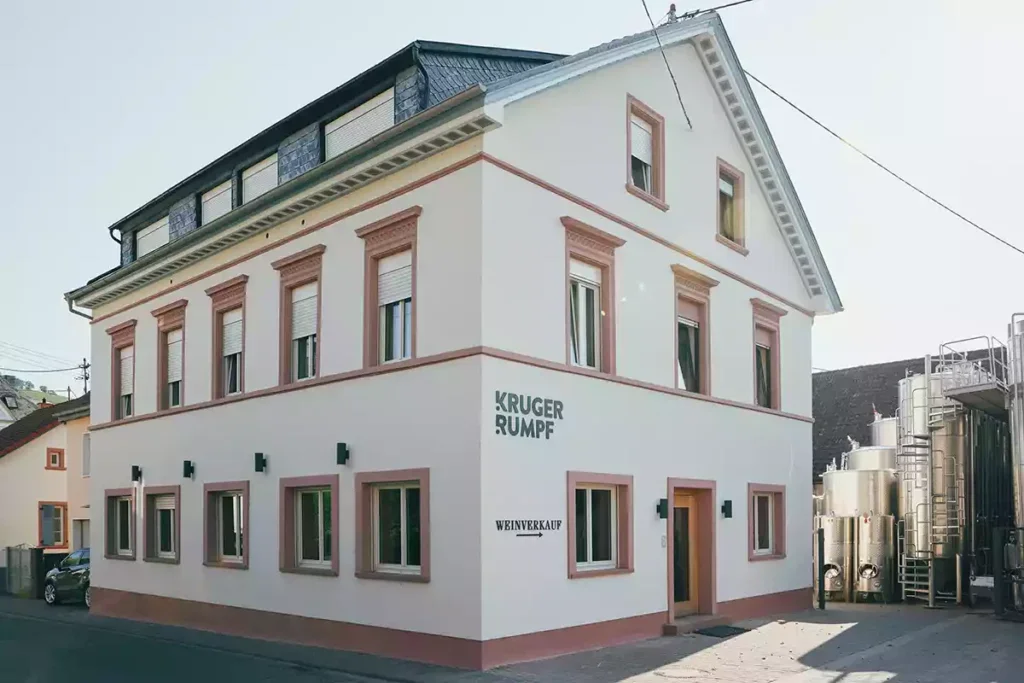
2023 Kruger-Rumpf Riesling Dry +
It does say “dry” and it also has a subtly embossed squirrel on the label.
I’ve been part of the blending exercise of this estate-Riesling and so I know what its usual components are. I am completely delighted by the skill of the cuvée in a vintage as difficult as ’23. It’s better, honestly, than any vintage I had a part in.
It smells both tantalizing and interesting. There’s a lot going on; the wine is polyphonic and chromatic, and this is more than you’d expect from a basic estate Riesling. It feints in a “green” direction (in this case anise-hyssop, verbena, lemon balm, and balsam fir). A little stone-fruit (white peach) crouches in the shadows.
Texturally we do deal with the shrill finale of this perplexing vintage, but this is an instance where I gladly sacrifice 20% of nuance from the Jancis glass in return for the greater juiciness and harmony from the Spiegelau.
The next time I tasted it was four days later, and the fragrances pole-vaulted from the glass. They seem slatier now (and I wonder how much of the blend hails from the Kapellenberg site …)
The tiniest grassy edge appears after ten minutes. That’s ’23. But it can’t efface a masterly skill in creating a cuvée that embodies both the domain itself while paying homage to the amazing multiplicity of terroirs they get to work with. Speaking of which …
2023 Kruger-Rumpf Quarzit Riesling Trocken +
Another estate-level Riesling exclusively from quartzite—which as far as I know means from the (Münsterer) Rheinberg, in this case.
It smells dazzling, “yellow” as always (yellow roses and yellow fruits, the signature of Rieslings from quartzite soil) and then it becomes a structural wonder. You start with fruit and a careful etching of mineral and then you sense a persuasive solidity of mid-palate structure; it has a different kind of grip now. If you pour it too cold that’s most of what you’ll taste, but at the right temperature you will adore the unyielding core of the wine, that lets you wander around every fleck of nuance without hurry. These flavors aren’t going anywhere, they’re held in place, they’ll wait for you.
It sounds odd to depict a wine with so many hedonistic elements as “mineral-driven,” but this wine squares that circle. Not to mention it’s 90% of the way to the profile of a “GG.”
The wine is bright and firm, but there’s almost none of the rasping end-palate of many ‘23s. It is classiness and value in a serious and mouthwatering Riesling. Indeed, to think that a Riesling as stylish, lissome, and balanced as this could comprise the basic segment of a German grower’s range is a statement of how far they have come in the last 15 years. Yes, the new climate is favorable for balanced dry Riesling, but it needed know-how and palate to bring it about.
In Boston where I live there’s a current vogue for Albariño. I really like Albariño, but if you’re looking for crisp refreshing interesting summertime white wine it is ludicrous to pass over this to reach for something more expensive and less of what you wanted.
Jeez, you’d think I was still a merchant with wine to sell …
2023 Kruger-Rumpf Binger Riesling Trocken
The village wine. In this case the “village” is across the Nahe, and technically in Rheinhessen. Stay with me here: the little Nahe bisects the regions down here a few meters before it enters the Rhine. On the west bank is Münster-Sarmsheim (Nahe) and on the east bank is Bingen (Rheinhessen), with its “GG” Scharlachberg on rotliegend and porphyry soil. (If you had side by side glasses of Niederhäuser Klamm and Binger Scharlachberg you’d be hard pressed to tell them apart.)
I want you to know this because this is an outlier at Rumpf, an “alien” terroir in their lower-Nahe context. And you’ll taste it right away.
First your palate will register the change in texture; this is much juicier and appreciably less firm. Then there’s the wild, almost funky fruit, a sort of earthy marmalade, savage and almost nettle-y. And it is a beautifully challenging wine.
On one hand you sink into its inviting wildness. On the other hand you wonder if you are safe there. The wine could be peopled with snakes. But leaving image aside, it grows more “polite” as it recovers from the screwcap burp and the actual wine really shows. It tastes like a relish of fruit and herbs. It’s like an eau-de-vie of wild-plum blossom.
Most satisfying is its fundamental harmony. They’re doing fine work at this winery. And if this is marginally less good than the previous wines, that’s due to a perceptible structural incoherence and also the (sadly) typical ’23 rasping scrape on the finish. Yet it was also the wine that showed the greatest improvement over the days, which supports my theory that the closure is to blame for its less convincing entry.
2023 Kruger-Rumpf Im Pitterberg Riesling GG +
The full name is Münsterer Im Pitterberg GG Trocken, and even if you were blind you would know it was a GG just by hefting the STUPID HEAVY BOTTLE.
But we do approve of the 12.5% alc, and we very much approve of the fine, searching fragrances. “Im Pitterberg” is a cadaster parcel in the “official” single-site Pittersberg, a slatey terroir whose wines can resemble Graacher Himmelreich, but with more body.
I haven’t always been convinced by Rumpf’s GGs (Georg once called me his “strictest critic,” which made me a little sad) but this one displays the virtues I appreciate in the category. It is serious without being earnestly self-serious; it has a lovely lingering depth with moderate alcohol and a limpid structure, through which a lucid and lapidary clarity is able to show.
As GGs go, this is one of the calmer, nuttier ones. The fireworks lay in wait. If you grope for nuances you’ll find yuzu and lime, but it’s the kind of wine you’re best off swooning into. As long as you’re not “tasting” it in some big (miserable) wine-“event,” you’ll get the calming effect, as if the wine were fined with lorazepam. “Easy does it; check this out…” it seems to say. It makes me think of Perigord walnut oil and of the tranquility of the countryside. Still waters, after all, do run deep.
Wines like this don’t usually come in first in situations where “coming in first” means anything, but it’s the wine I’ll take with me while reading the new poems from Li-Young Lee over a quiet couple hours. No one has written about how a wine could entail poetry, and I’m not sure I’m good enough to attempt it, but I do know that certain wines seem to reflect the poetic spirit. They’re the ones that absorb you, not the ones that “blow you away.” There’s loads of room in life for both, but one of them is over-valued and the other is under-valued. Me, well you know my preference by now.
2023 Kruger-Rumpf Dautenpflänzer Riesling GG +
… in the wonderful heavy bottle … <sigh> …
They’re quite a tandem, these two neighboring GGs. One (Pitterberg) is cool and introverted, and the other is zizzy and extroverted. (I think “zizzy” is a word, or at least, Pauline Kael used it.) The full complement of Nahe exotics are found in Dautenpflänzer, whereas its neighbor is more retiring, though no less profound.
Here the wine is salty and riotous. It seems to say I have ARRIVED. It’s so exotic you suspect there’s some other variety hidden in the mix—but no, it’s just the terroir, you know, the thing whose existence it is fashionable to deny. It being ’23, it comes off rather brash, yet the flavors are so persuasive and squally you really have to yield.
Look, I hesitate over wines as overt and gaudy as this, and I’m on record voicing my wariness about 2023—yet this wine swept easily through my dinky little caveats and ended up convincing, in its un-subtle way.
It needed more time in the glass. After 10-15 minutes it started to show its mid-palate, which wafted a fragrant breeze of heirloom apples and quince. It was exactly what the wine was craving; a mid-range note of fruit to anchor all the up-front clamor. The wine grew palpably deeper. The finish, at first merely salty, obtained a host of spices. If Pitterberg is a portrait of still waters, this one shows that noisy waters can also run deep, if we can get past the din.
We do have to contend with the textural/structural coarseness of so many ‘23s, or rather, at the end effect of so many ‘23s. But the usual mitigations apply: food helps, drinking (rather than “tasting”) helps, you know all this. Patience helps too, and it may be that the most impressive element here is the crescendo of substance as the wine breathes and warms.
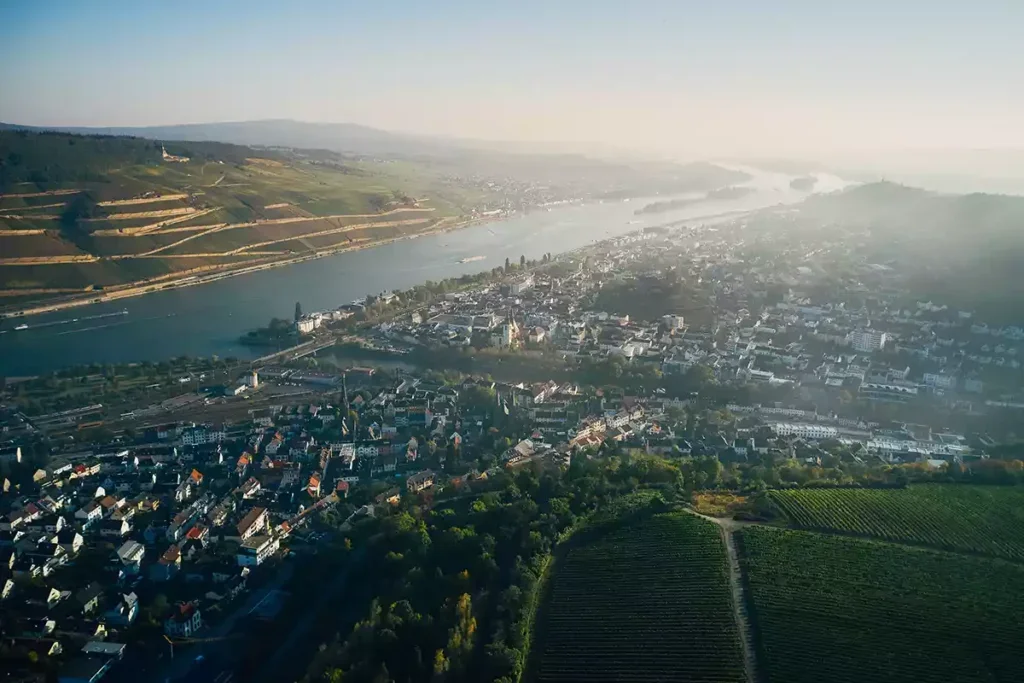
2023 Kruger-Rumpf Abtei (Bingerbrücker) Riesling Trocken 1937 ++
Full name “Bingerbrücker Abtei Rupertsberg,” from old vines, a “mere” 1er cru, a wax-blob capsule to signify its stature. No such signifier is needed …
A quixotic project for Georg Rumpf, to reclaim this ancient site, on a steep (and difficult to work) hill facing over the Rhine, the most downstream of all Nahe vineyards. When I first heard about it I thought he was nuts. He laughs last.
The soil is rare, a Phyllit rarely found elsewhere, though most famously in the Rauenthaler Baiken, where no grower I know of makes anything as good as this.
In many regards it really suffices to say the wine has depth and complexity. Depth is tactile, you’ll sense it immediately. Complexity entails surface intricacy but goes through it to something more mysterious and profound. (87-year-old vines will do that …) In a way it enters the family of Forster Kirchenstück, a similar “pedagogy,” an analogous sort of cragginess, an exacting stern beauty, a dark and fervent glow.
I respond to wines like this; I seem to have an antenna for gravitas, and I like when a wine doesn’t cheer me up but instead makes me think of the friends I haven’t called in too long. The wine is a beautifully uneasy nocturne, reminding us to love the world, because it is the world.
2023 Kruger-Rumpf Phyllit Riesling Feinherb ++
Classified as an “estate wine,” it clearly hails from the Abtei, as there’s no other Kruger-Rumpf site on Phyllit soil.
The wine is completely exquisite. Its balance is perfect. Its rendering of the gorgeous maze of complexity this terroir can offer is as convincing as its big brother’s. It is the greatest wine I have ever had from this estate.
I’ll spare you my perorations on behalf of the feinherb category. I’m sure you’ve heard enough of them. Yet this relatively “slight” little being offers every bit as much complexity as its uncle, but it’s another vein of complexity. Up there is chant; down here is melody. A wicked melody, rascally and angular and surprising.
The (several) registers of flavors refer to wild savories (sweet hay, flowering fields), smoky spices (a Phyllit signature), a fine declension of anise and wild fennel flowers—all sorts of things. And all rendered in an irresistible gulpable way, though you may have to pause your gulping just to heed these amazing flavors.
It strikes me as a Riesling-essence. But what does that mean? I’d put it like this; it shows an intricacy that seems effortless, as though intricacy were its essential nature. It shows such pinpoint balance it tastes predestined to be precisely this way. It has Riesling’s core of Riesling-ness while also playing its dazzling variations atop the theme. Finally and maybe most important, it enacts all this with the most diffident affect, no mighty signifiers of its distinguished importance. It’s just in the glass, glowing.
2023 Im Pitterberg Riesling Kabinett ++
It carries the “VDP Grosse Lage” emblem, but because it has RS it spares us the stupid heavy bottle! Yay sugar, or something like that.
The wine smells marvelous. The first “sweet” wine in the tasting always seems emphatically sweet, but this one isn’t; it’s an old-style Kabinett that finishes sternly dry, and at the right temperature (around 45ºF [7°C] in this case) its structure is zippy enough that it registers zingy and crisp.
The expressive aromas of slate and walnut are captivating; the palate is balanced and juicy; the finish is lengthy and lingering, and this is everything that can be asked from an ostensibly unassuming little “Kabi” in today’s Germany.
2023 Scheurebe Kabinett +
I have always loved Rumpf’s Scheurebe, and have written reams of salacious notes on its behalf.
This one is excellent, though not terribly randy. As you (must) know, Scheu expresses as pink grapefruit, or cassis, or sage, or some or all of these. This one’s mostly sage-y and on the earthy side. Martin Franzen (at Müller-Catoir) told me it wasn’t easy for Scheurebe in ’23, which may be why it’s so (relatively!) diffident here.
Indeed it’s in that liminal space where it could easily be Sauv-Blanc or Muscat; in other words a “spicy-grassy wine” without insisting on a specific variety. And yet …
As with all of these, time in the glass awakens the wine, and while it isn’t the kind of Scheu that curls my particular toes, it is more than kinky enough for your average Presbyterian. The grapefruit aspect comes on, and the wine is excellent weekday Scheu fun.
2023 Dautenpflänzer Riesling Spätlese ++
Diam cork, and heavy bottle. Enough already.
Searching, lovely Nahe-Riesling aromas. There is nothing like them.
The wine is overtly angular and spicy. It answers none of the usual expectations for “Spätlese,” and that makes me indecently happy.
There is no honey in aroma or palate. There is no incipient overripeness, such as seems to be unavoidable in today’s climate, and also, it must be said, in the mentality of (too) many growers who think that “sweet” wines should sit in the Konditerei instead of on the dinner table.
In place of these is a tautly spicy and adamantly mineral palate that’s even more expressive than its GG sibling, such that I’d tell the student “If you want to taste pure Dautenpflänzer, taste this one.” I love its wildness—I love its self-ness.
Only in the middle of the finish does anything resembling “sweet fruit” appear, and it is welcome when it does. Otherwise it’s ginger, cardamom, and incense all the way.
This isn’t a universal principle, but in 2023 this is a truer and finer expression of the site than its more “important” (and very good) GG. Sometimes it happens that way. I can’t help it if no one notices, because we’re serenely assuming the “sweet” wines are trifles for people with little-kid taste, whereas the mighty GGs are effulgent with lofty purpose. And I love GGs, drink them all the time, but right now, at this address and in this vintage, this is the better expression of this superb Cru.

